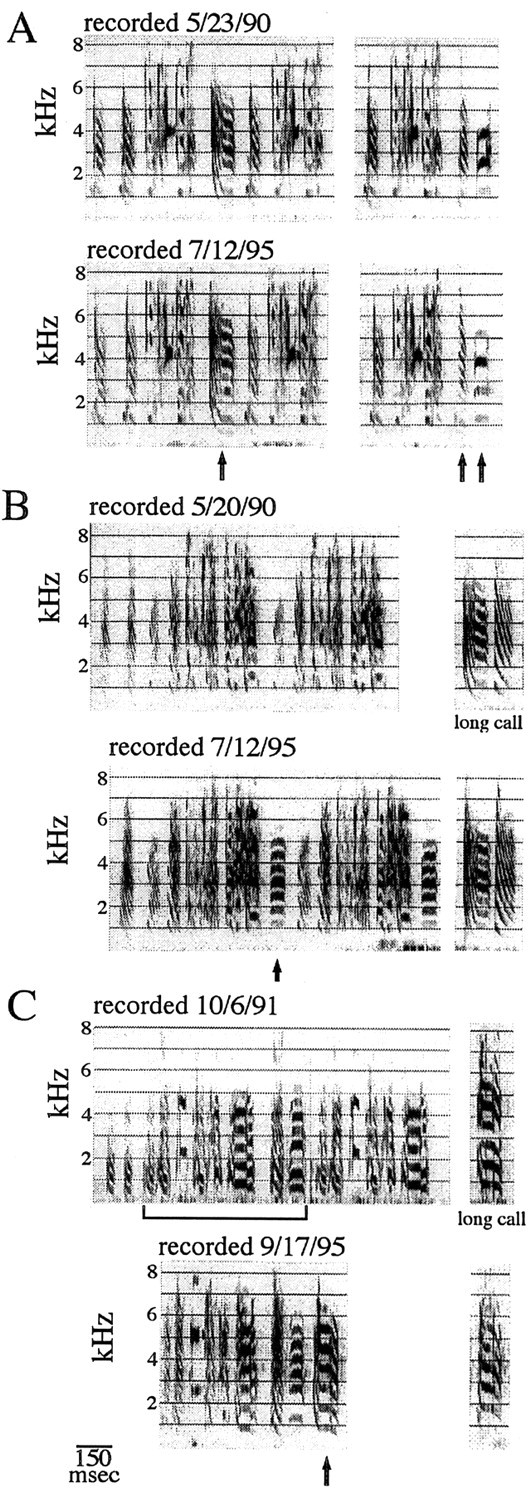Fig. 2.

A–C, Song stability in three intact adult zebra finches over a long period of time. The long calls for two of these birds (B, C) are also shown. The two renditions of the song or call of the same bird have been aligned vertically to facilitate comparison of temporal and acoustic features. Each bird was at least 6 months old at the time of the first recording. As shown by the dates printed above each song, 4–5 years elapsed between the first and second recordings shown. Overall, the learned vocalizations changed relatively little in time. However, notice that some flexibility in song production is possible even with a closed-ended learner such as the zebra finch. One of the birds (A) produced two alternate, yet closely related, versions of the same motif, which differed in the last one or two syllables (arrows), an idiosyncrasy that persisted over the years. The kinds of changes that occurred over time were, for example, slight changes in harmonic emphasis (e.g., A,lastsyllable), the addition of the short call (B, arrow) or long call (C, arrow) at the end of the motif, and small changes in the temporal structure of the motif (C, notice the misalignment of the songs).
